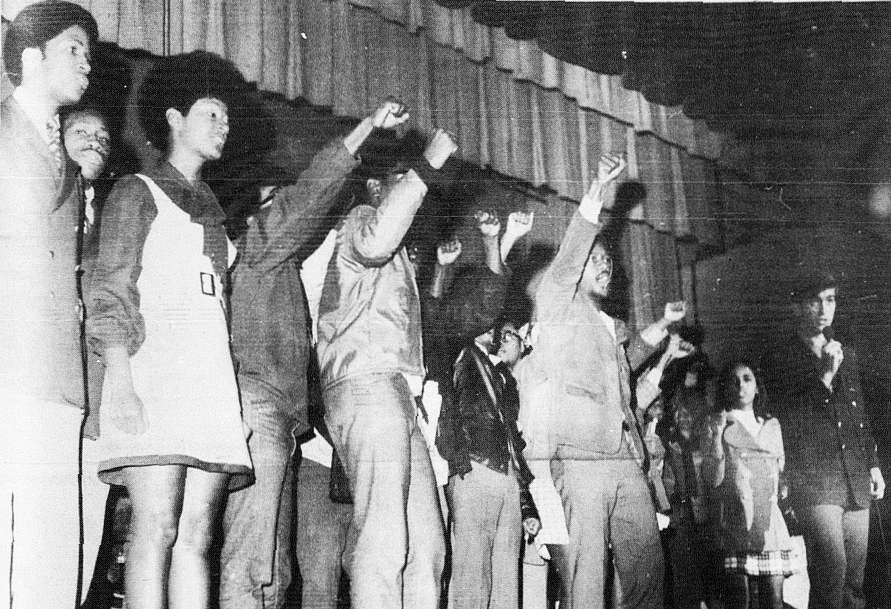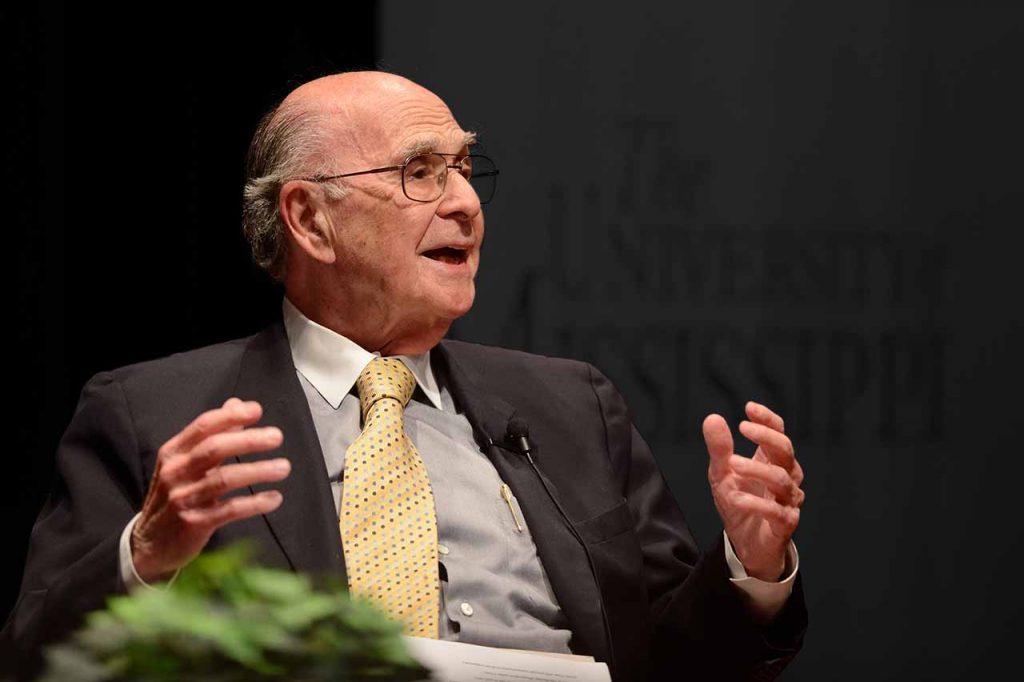
Fifty years ago this week, three protests for black equality on campus led to 89 arrests and changed the course of the university’s history.
On Feb. 24, 1970, forty students from the Black Student Union presented 27 demands for inclusivity on campus to then-Chancellor Porter Fortune. At the same time, another group of black students burned a Confederate flag and danced on tables in the cafeteria to the music of B.B. King. The next day, almost half of the black students at the university — some of whom are in the photo above — participated in a peaceful protest outside of Fulton Chapel during a concert.
During and after the concert, 89 people were arrested and sent to a local jail or Parchman state penitentiary. They were released the next day. Eight students, their names listed in the middle column, were suspended from the university.
Students suspended for protesting:
John Donald
Alva Ruth Peyton
Henriese Roberts
Kenneth Mayfield
Donald Ray Cole
Paul D. Jackson
Theron Evans Jr.
Linnie Liggins
This was “a watershed event,” wrote university historian David Sansing. The results of the protests would effectively start black students’ ongoing struggle to be seen as full members of the university community.
The protests sparked a number of important developments. In the same year, a black woman graduated from the law school for the first time, the university hired its first full-time black faculty member, the university created an African American studies program and a committee to improve race relations, a campus minister was appointed for black students and the first black student athlete enrolled.
The day after the arrests, The Daily Mississippian ran a front-page story with the headline “Eighty-nine blacks arrested.” The story referred to the people arrested only as “blacks,” and an editorial from the editor-in-chief said the protests had “gone too far” because they were disrupting a campus that had been “bending over backwards trying to give students a fair shake.”
These students were not being treated fairly, of course. Nearly every institution, including this newspaper, treated them as outsiders to the university.
“At the time, an attitude still existed among whites in the state that blacks could attend Ole Miss, but that was all they could do,” UM graduate and author W. Ralph Eubanks wrote in 2004 about the early 1970s at UM. “The culture, heritage and traditions of the school stood as barriers, since those were the domain of the dominant white culture and would remain.”
Institutions of power on campus did not take the protests lightly. The chancellor announced that criminal charges were filed against the students and threatened severe punishment for anyone who disrupted “the orderly process of the university.” At first, the faculty pledged complete cooperation with the statement. However, later that evening, a resolution was adopted to recommend dropping the charges against the students and recognized the grievances as legitimate.
Those who are often considered the official voices of the university, like the chancellor or the Institutions of Higher Learning Board of Trustees, sometimes know the least about the status or direction of UM. This was evident fifty years ago. Though remembering the 1970 protests may seem like an exercise in celebrating a brave history, it should also be a contemplation on how to continue this legacy of bravery into the present.
It is the students of UM who shape the institution into what it will become. UM’s legacy is one in which those in authority often work against progress, whether actively or passively. Students move the university forward anyway. It was true in 1970, and it is still true today.
The state flag no longer flies in the Circle because of students’ work. In 2016, when a member of our community referenced lynching, the administration did not respond until students protested. Administrators are slow to relocate the Confederate monument, which, of course, students campaigned to move.
Even with this progress, our campus is still not a fully just or equal place. We can only hope that students today will continue the legacy of creating a better future for the university. As the campus changes more in less time than it has before, it’s time to step up.
One of the students arrested in the 1970 protest sets an example of a person who created a future for the university. Donald Cole sacrificed his education when he was suspended for protesting — he couldn’t enroll in any state school after the incident. Still, he returned to work as a professor and assistant provost. In these roles, Cole worked to make the campus more inviting for minority students.
“I love the university, and I have worked very diligently and very hard with the university to make it a better place for others,” Cole said in an interview last year. “I have made a lot of personal sacrifices for the university to make it a university of the 21st century.”
The university will celebrate and reflect on Black Power at UM tonight and tomorrow. Tonight at 6:00 p.m., there will be a film screening, stage reading and panel discussion at Fulton Chapel. Tomorrow, a commemorative ceremony will be held outside of Fulton Chapel at 3:00 p.m., and the Black History Month Keynote will be in the Student Union Ballroom at 6:00 p.m. Follow our coverage of the events at thedmonline.com.












